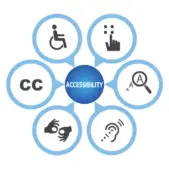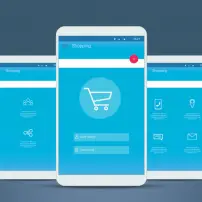Every company faces obstacles and setbacks on its road to success and prosperity. Meeting and overcoming business challenges are just part of the process; adversity helps to build a stronger, more resilient organization.
However, there are times when organizational dynamics contribute to the difficulties or impede efforts to solve them. In these situations, businesses need to do two key things: identify the precise nature of the challenges they’re facing, and prioritize those challenges by addressing the most critical and pressing issues first.
Research to Identify Your Business Challenges
Correctly identifying your business challenges is the first step in solving them. Accurate identification requires a careful and systematic analysis of both the external and internal factors influencing business growth, efficiency, or outcomes.
As an example, consider a struggling sales team. Despite their best efforts, reps aren’t meeting their targets—and nobody quite knows why. As you dig in, you might find that administrative tasks are interfering with your sales staff’s core duties, or that your website isn’t generating enough high-quality leads. You can then address the issue at its root with confidence and precision, thus facilitating positive change efficiently.
UpTop Perspective
Simple 1:1 interviews are a great tool at identifying friction points. They don’t require any fancy or high tech tools, but rather an open and curious mind.
Industry Benchmarking
Benchmarking helps businesses identify targeted areas for performance improvement. It essentially involves comparing your business against competitors in your industry. Depending on the benchmarking strategy you choose, these comparisons could be quantitative, qualitative, or a combination of both.
Businesses often use one or more of the following benchmarking strategies:
- Competitive. This approach directly compares your business against its top competitors, using quantitative, head-to-head metrics. It can illustrate precisely where you’re falling short, allowing you to target those areas for improvement.
- Internal. If your business carries out similar processes or tasks across multiple areas or departments, you may find that some departments outperform others. This can signal process deficiencies or inconsistencies, which you can then address.
- Performance. Apply key performance indicators (KPIs) on organizational, departmental, and individual levels. Compare the results to identify how specific personnel or departments are performing relative to the business as a whole.
- Strategic. If a competitor is having far more success than you—have you stopped to figure out why? Look at competitors’ operational structures, marketing materials, and competitive advantages for clues on how you could improve.
- Technical. This important benchmarking tool examines the technical specifications and performance benefits of your products or services. Compare results against market-leading counterparts to see where you’re succeeding and where you’re falling short.
The more benchmarking strategies you use in your analysis, the deeper and more detailed your analytical insights will be.

Stakeholder Interviews
Interviewing can help organizations identify business challenges that quantitative analysis may not readily uncover. By talking to high-impact stakeholders, you can build broader and more actionable perspectives on the issues your business is facing.
The following best practices can help you make the most of your stakeholder interviews:
- Choose stakeholders with varying perspectives and roles within the organization to help build a holistic picture of the situation.
- Ask questions likely to generate insights beyond the surface level, digging into issues affecting the company’s near-term and long-term needs and growth objectives. Use your questioning to build a better understanding of the pain points your customers face when they turn to your business.
- Record or otherwise document interviews for future reference.
- Review all interviews and look for consistencies and recurrent themes among stakeholder responses.
Conduct your interviews during the early stages of a strategy review. It’s best to complete them in the first one to two weeks, to ensure the inclusion of valuable insights in the earliest development of your strategic planning.
Iterate on Why These Business Challenges Exist
Your analytical research should help you pinpoint the nature and causes of your business challenges with depth and precision. To achieve this, you need to both define the problem(s) correctly and consider whether collaborative or cross-departmental challenges are contributing factors.
Defining the Problem
First, you need to make sure you’re solving the right problems. The so-called “Five Whys” method can help you zero in on the root causes of specific symptoms. This entails asking a series of targeted questions that examine cause and effect each step of the way. The practices holds that asking “why” five times should lead you to the root cause of the problem.
Using a simple example, suppose an employee was late for work and you want to find out why.
- Why were you late for work? Because I got stopped for speeding on the way here.
- Why did you get stopped for speeding? Because I was running late.
- Why were you running late? Because I was late getting up.
- Why were you late getting up? Because my alarm didn’t go off.
- Why didn’t your alarm go off? Because I forgot to charge my smartphone and the battery died overnight.
The root cause of the employee’s tardiness wasn’t the fact that they were stopped for speeding. It’s because they didn’t charge their smartphone the night before.
Another method that can help is known as the problem definition process. This method uses four main steps:
- State the need.
- Justify why you need to solve this problem.
- Ask what the cause of the problem is, what efforts to solve it are already in place, and why they aren’t working.
- Synthesize the insights generated during the first three steps to write a succinct statement defining the problem.
Equipped with that definition, you can move toward solving the problem with both speed and precision.

Cross-Functional Collaboration
In organizations with departmentalized structures, business challenges often arise from cross-team challenges. The push and pull that goes on between marketing and user experience teams is a common example.
Cross-functional collaboration can help businesses address these challenges by better engaging their employees and encouraging everyone to work together toward a shared goal. The process is based on the idea that projects should engage members of different teams and people with different organizational roles to the greatest possible degree. This reduces information silos, keeping departments from becoming too insulated and isolated.
While cross-functional collaboration may arise organically, decision-makers can also implement it by design. If efforts to define business challenges indicate a lack of collaboration as a key issue, management may elect to revise the organization’s working model to emphasize collaborative approaches.
Utilize Business Metrics and KPIs
Certain key performance indicators (KPIs) can provide data-backed quantitative insights into the sources and impacts of business challengers. However, it’s important to select the most relevant metrics—and prioritize them accordingly—when formulating action plans.
Align Metrics With Business Goals
First, consider the specific business goals your problem-solving efforts endeavor to address. For instance, you might want to pinpoint specific shortcomings in your user experience design or understand why your company generates low levels of repeat business.
Next, situate your KPI choices in the context of those business goals. If you’re looking to build stronger levels of customer loyalty, you’ll gain more by considering customer lifetime value (CLV) and retention rates than you will by analyzing overall market share or profit margins.
Conclude by identifying current baselines as well as targets for future improvement. This will equip you with discrete methods for measuring progress toward your objectives.
Conduct Regular Performance Reviews
Once you’ve identified baselines and set targets for the most relevant KPIs, you can craft a strategy for reaching the goals you’ve set.
As you work towards those goals, be sure to monitor progress regularly and continuously. This allows you to identify and correct potential strategic shortcomings quickly, before you spend time and resources on inefficient or ineffective efforts to address your business challenges.

Listen To Internal Challenges at All Levels
Companies often make the mistake of only consulting management-level employees when seeking to identify and address business challenges with internal origins. Instead, engage team members at all levels. Frontline staff members in entry-level roles sometimes have their finger on the pulse of the problem in a way managers and executives simply do not experience.
Some examples of common internal challenges might include:
- A lack of commitment or support from management in solving frontline problems or issues
- Outdated service practices or legacy tools
- Disorganized or inefficient data collection and analysis
- Limited or no engagement with users, customers, and external stakeholders
To help identify and solve these business challenges, foster an organizational culture that encourages and rewards open and honest communication up the company’s entire chain of command.
Test Now and Test Often
In addition to encouraging open and honest communication, businesses should also work towards building a culture of innovation and experimentation. As an example, consider a business seeking to improve user experience on its website. Regular UX auditing, testing, and retesting can uncover optimization opportunities as the project moves through various iterations.
Experimentation- and innovation-oriented business cultures also engage employees, empowering them and making them feel as though they’re directly contributing to the betterment of the company (which they are). They also help businesses find new approaches and solutions that advance beyond the competition, helping them to gain advantages, attract and retain customers, and ultimately increase profitability.
The Value of Engaging a Fresh Set of Eyes
Ultimately, companies sometimes struggle to identify their business challenges because internal analysts are too close to the problems. In these cases, engaging an external partner can help.
UpTop specializes in helping businesses craft and build superior customer experiences through a combination of organizational review and smart approaches to branding and development. If you need help figuring out the ultimate nature of the challenges your business is facing, we can help: UpTop has already authored many compelling success stories, and we’d love to make your business our next one.
To arrange your consultation, reach out to UpTop today.


